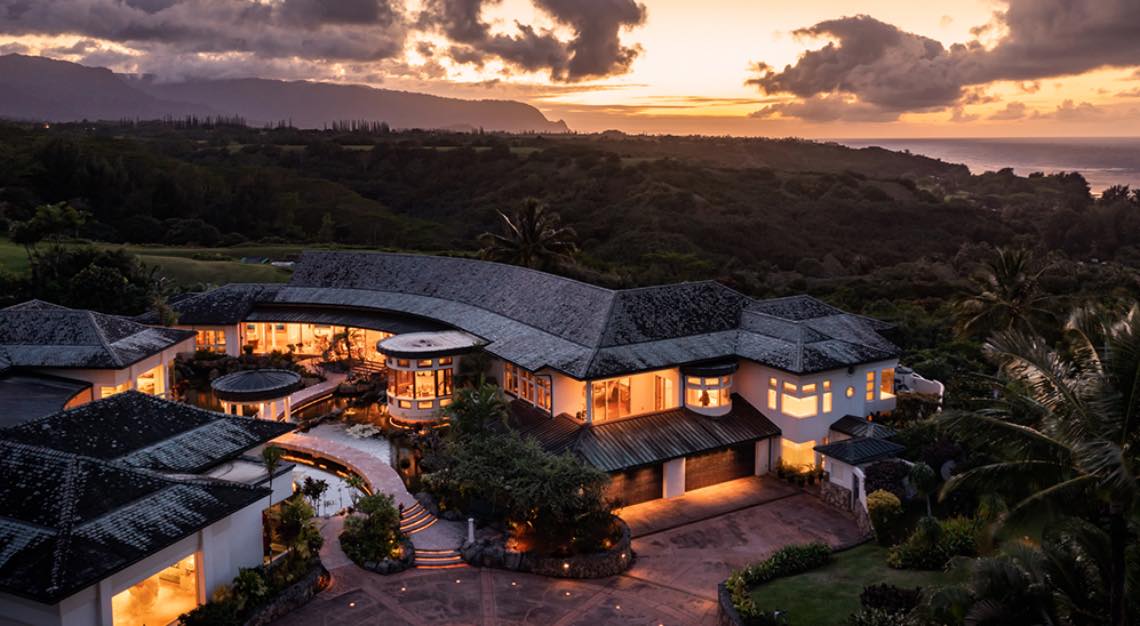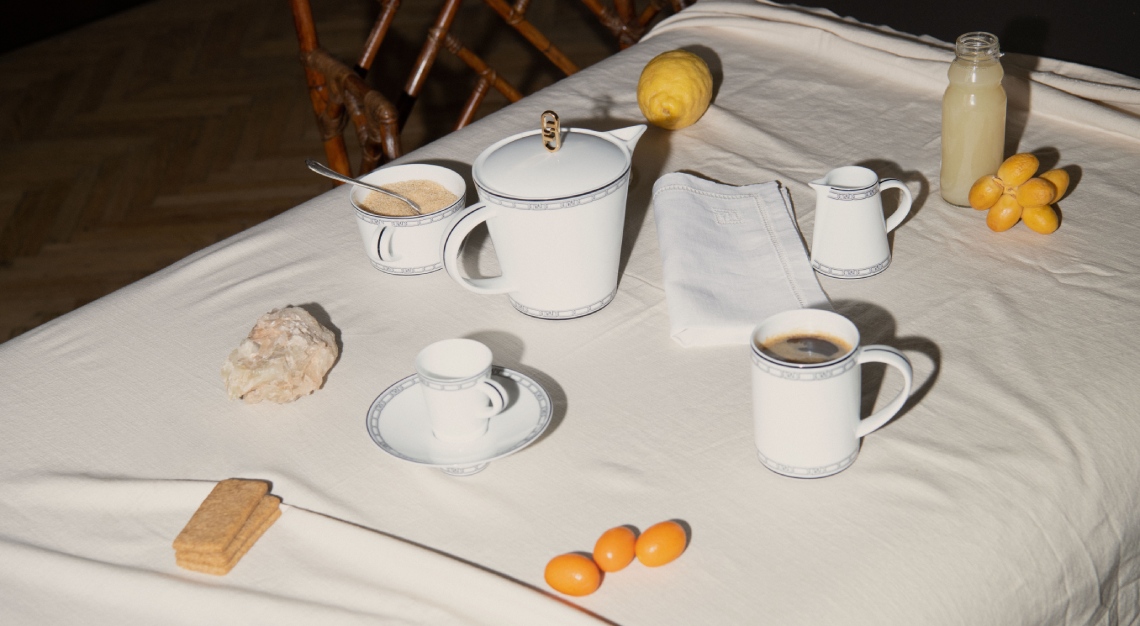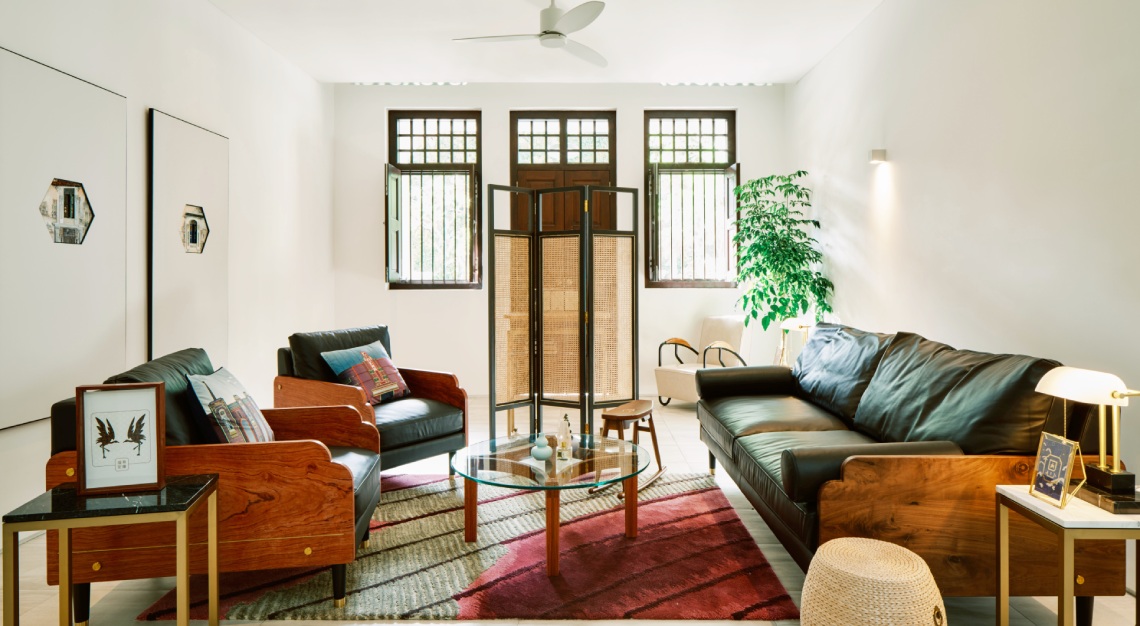A home, truly, maketh a man. The architect shares his journey from designing good-class bungalows to large residential developments
There are a few things that make a home, a home, especially in an urban jungle like Singapore. Yip Yuen Hong, founder and principal architect of ip:li Architects, believes that it all boils down to one’s perspective of design and space; a home, after all, becomes the best of its kind when imbued with an inimitable sense of personality and style.
Yip is currently working on Midtown Modern, which is set within Guoco Midtown. The project is not only his second large-scale condominium, it’s also his second collaboration with the developer (the first being Martin Modern).
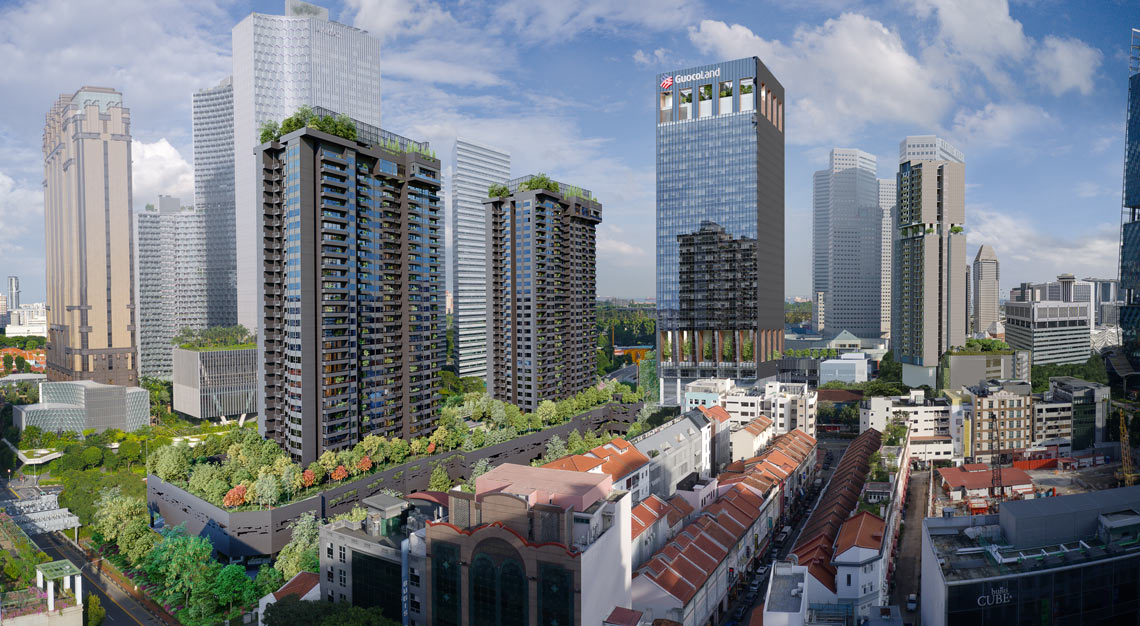
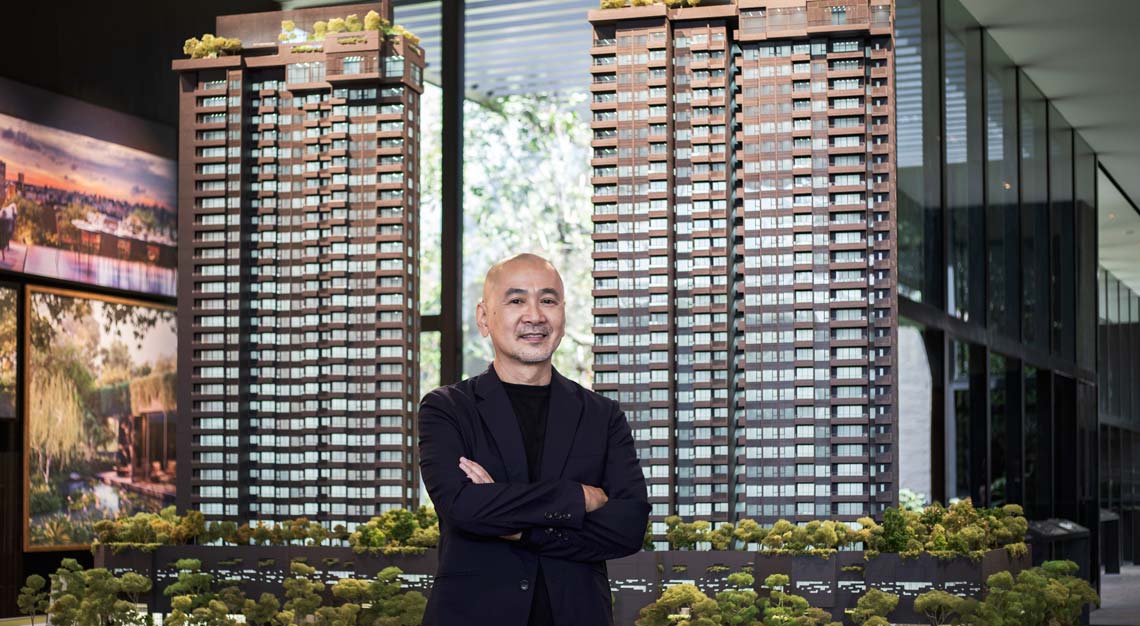
There are numerous ways to describe quality design, but Yip identifies it as simple, functional, timeless and explorative. Little wonder then that Midtown Modern is an amalgamation of the aforementioned; the two residential towers have a semi-brutalist architecture that has been beautifully pared down with lush gardens. Situated on Tan Quee Lan Street, the 30-storey towers will be home to 558 units with full condominium facilities and a retail podium.
What does your involvement in Midtown Modern mean to you?
One of the great things about being in this project is getting to work closely alongside a discerning developer. Not every architect will have the chance work with a developer like GuocoLand, which not only has a strong design DNA, but also a motivation to serve the environment and its people. That, to me, is important as it forms the basis for those involved and ideas stemming from it will be aligned and in sync with the vision.
You’ve shifted from designing relatively smaller-scale projects like good-class bungalows to large residential developments. Apart from size, what other design differences are there?
The main difference between the two is the complexity. The rules and regulations are also mind-boggling. But what’s important is to understand that architecture is for the people. As long as we keep that in mind, we won’t go wrong, regardless of the size of the project.
Midtown Modern follows quite a brutalist design approach, blended with lush greenery. What led to this?
Luxury doesn’t necessarily mean finishing a home with expensive materials; a penthouse with glass and marble can look luxurious. But if you think about it, some of the shophouses in Singapore are very pared down, yet they’re able to exude a sense of lavishness. It’s all about how you craft a space and make the materials work in tandem, taking design to a whole new level.
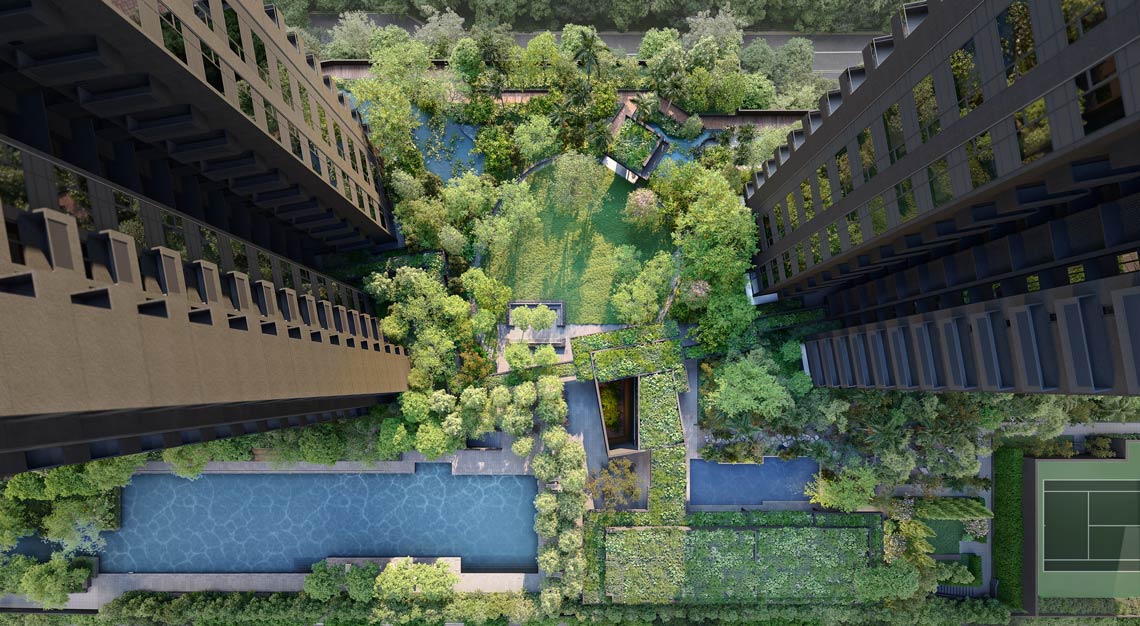
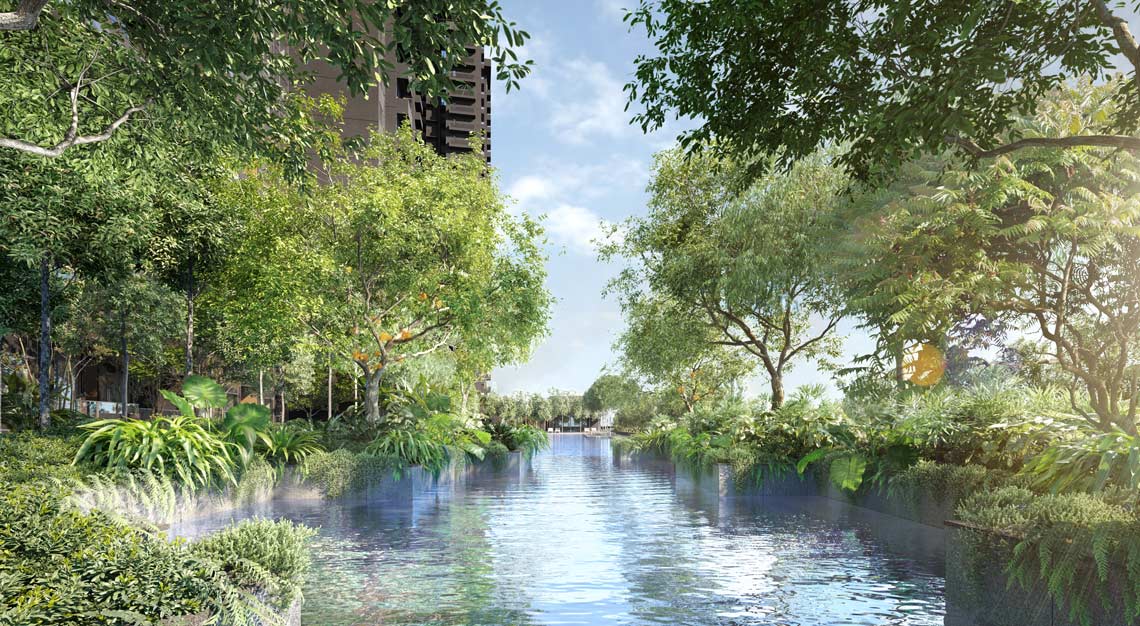
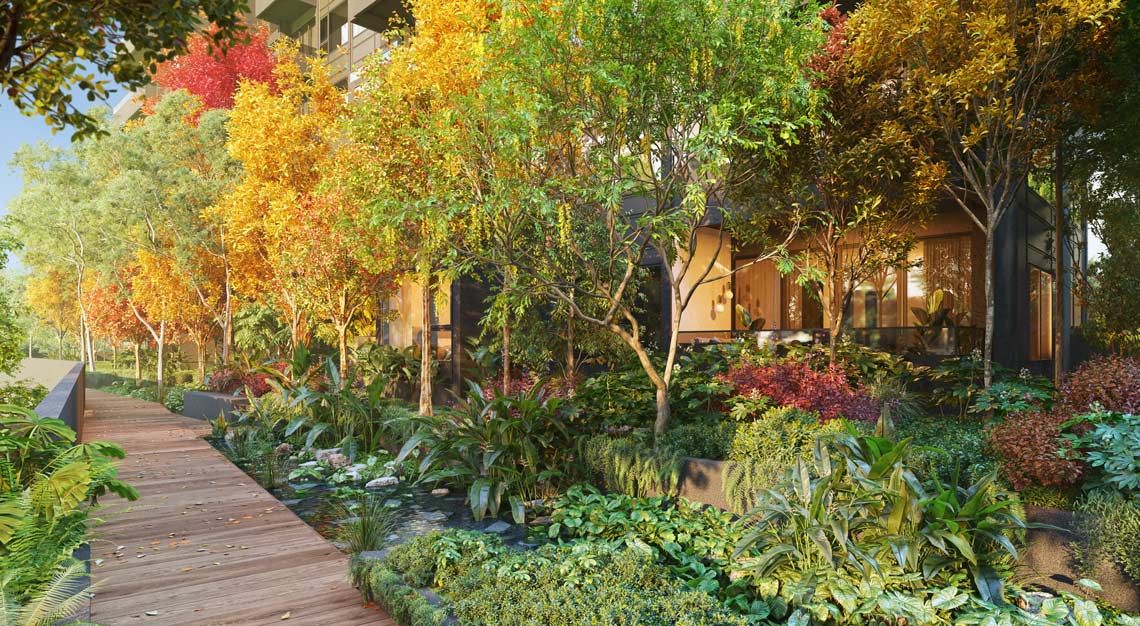
Do you think the demands of homeowners have changed over the years?
More and more buyers are well-travelled today, so they would have seen everything. But what we’re trying to demonstrate here is the use of alternatives. Perhaps, instead of using shiny marble and glass everywhere, we can also use warmer materials that are still palatable, yet able to withstand hard knocks.
If you had a signature style, what would it be?
I started doing very rough and tough architecture years ago, experimenting with materials that can withstand impact and the test of time. And sometimes, depending on how you make use of the material, it can become quite timeless. If you go to Bali, for example, you may see homes made from sandstone, which look terrible in the beginning. But when the walls age, they become somewhat ‘patinated’ and the homes have a touch of romance to them. Hopefully, the homes will look even better as they age, so much that owners would become attached to them.
What can homeowners expect from Midtown Modern?
Each condominium has its own unique traits. But for Midtown Modern, one of its main offerings is giving owners a sense of homecoming when they arrive. They’ll drive deep into the property before reaching their unit; that journey builds a sense of anticipation. At the drop-off, there will be a concierge, which has a glass house bathed in a dramatic light shaft. When they take the lift, the light they see in this glass house changes, depending on the time of day. This experience, to me, feels almost spiritual.
How do you think Midtown Modern is changing the architectural landscape in Singapore?
Good architects design in context, taking into consideration factors such as the convenience of transportation for homeowners and the presence of medical facilities and schools in the vicinity, for instance. So, no matter the context, architects should harness it to the maximum. It always draws back to the main principle of architecture: creating something that is good for the people.

